The Magic of Beginnings

Monday morning. You open your eyes, roll over again in bed – but it’s no use: You have to get out. Shower, brush your teeth, make coffee, smile at your better half and remark that he or she looks fantastic despite the adverse Monday circumstances. In fact, your first waking seconds and minutes of the new week are already filled with beginnings: first movements, first sentences, first rituals, first goals achieved. However, you are neither aware of it, nor are these types of beginnings especially mind-blowing. But: You can change that – and get more out of all those little beginnings than you ever thought possible.
The following will tell you how to deal with fresh start blockages such as fatigue, procrastination, fear of the new, self-doubt – and how to unleash all kinds of positive actions.
Why Start Anything… Anyway?
As with anything that sounds good in any way (like the lead text of this post), it’s worth asking the “why” question at the very beginning, to get, well, started. Why should you bother about new beginnings and kicking off something?
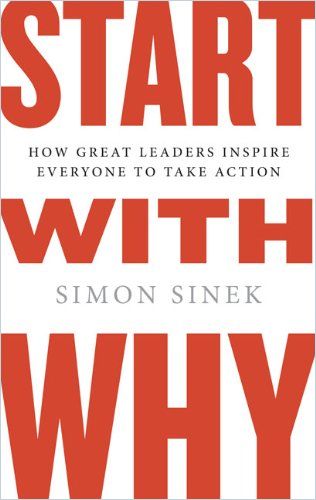
World-renowned author and speaker Seth Godin tells you:
Getting started is powerful and life-changing. And in today’s globally competitive world, initiative is your differentiator.
Someone will always be around who can do what you do faster, cheaper and maybe even better. In many ways, the internet has leveled the playing field; money, access and size don’t wield the power they used to have. Ideas, staff, physical plants, materials, financing, marketing and shipping are less expensive and more available than ever before. But what it takes to meld these elements into a successful formula is the willingness and determination to start. The only differentiator is “initiative.” Or, as Godin puts it in Poke the Box, “I’m merely encouraging you to start. Often. Forever. Be the one who starts things.”

Starting, for Godin, is not simply an option; it’s a “moral obligation.” If you don’t pursue your ideas, ask questions or act on your instincts, you’ll hurt yourself, your team and your company. You’ll keep the best part of yourself hidden away. And if the company you work for doesn’t encourage getting started, it might be time to explore other options (and Seth’s Thought Leader Profile.)
So whether you want to stay with your company (statistically, by the way, companies make the biggest leaps in growth in the five years after their start) or change your direction: If you follow the steps below, you can handle any obstacles along the way. Let’s go through them one by one, from getting up in the morning to reinvigorating already successfully running organizations or business projects.
1. Kick-Start Every Day
It starts, as we’ve said, with every morning. So, do you, too, stagger out of bed frazzled and overwhelmed? That’s no way to start the day, say Benjamin Spall and Michael Xander, co-founders of MyMorningRoutine.com. Their research shows that a purposeful, nurturing morning sets you up for the day ahead.
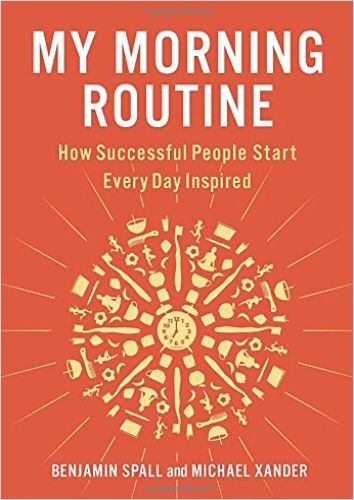
In addition to suggestions for helpful morning rituals, Spall and Xander interview successful people – including Olympic medal winners, CEOs, authors and educators – about their morning habits to provide inspiration for developing your own early regimen. The findings and best practices in a nutshell:
- Successful people who feel most alert and energetic in the mornings use this time to get as much done as possible.
- A consistent exercise routine nourishes your mind, body and spirit.
- A meditation or mindfulness practice gives your day clarity, focus and a sense of peace.
- Learn more…
Did you know? The number one natural barrier to starting things is fatigue. Tiredness is a good warning from the body not to overdo things, but can become an obstacle when it becomes “chronic.” Therefore, sleep enough, take care of your physical and mental health to avoid the consequences of fatigue (lack of concentration, grumpiness, malaise, etc.), and you’ll always be ready to take action when it comes to getting something started.
Be willing to be a beginner. Every single morning.
Meister Eckhart
2. Get (and Keep) Your Momentum
OK, your cereal was almost forgotten, the bus was packed as usual, and in the office, everyone is making the usual long faces. It’s hard to transmit the buzz from the morning into the workday – but it’s not impossible! Especially not when we listen to the Womacks: Jason and Jodi explain in Get Momentum how you can secure, maintain and expand your momentum to complete your professional projects and reach your personal goals.
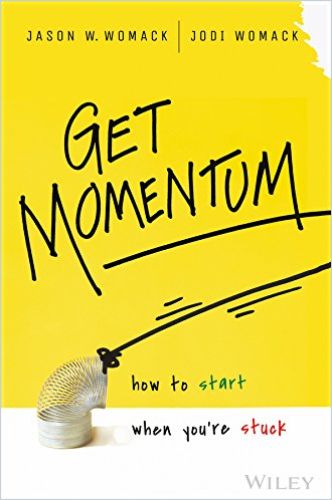
The Womacks present useful recommendations on how to leverage your momentum in five stages: building up motivation, finding mentors, reaching milestones, monitoring your progress and making any needed modifications. The Womacks skillfully explain how to create, develop and sustain momentum in your work and your personal life. Remember:
- Momentum goes through five stages: “motivation, mentors, milestones, monitor” and “modify.”
- Motivation – You know why you want to accomplish something.
- Mentors – Senior advisers provide guidance and direction as you pursue your goals.
- Milestones – Break your project into manageable “subprojects.”
- Monitor – Keep track of your progress.
- Modify – Be ready to change processes and tactics that aren’t working.
- Learn more…
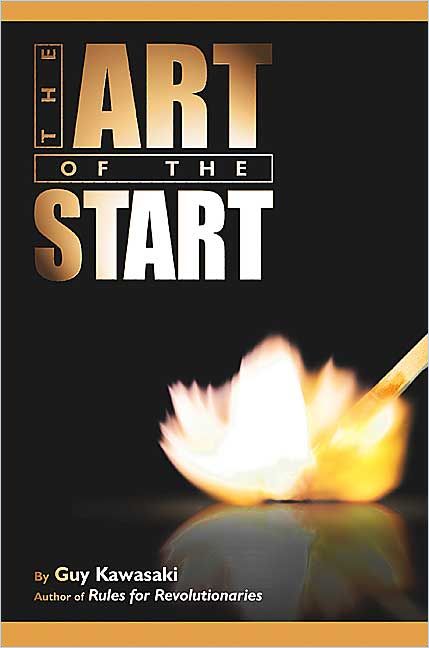
Did you know? Procrastination is a self-reinforcing cycle that prevents new beginnings. The more you stall important work or decisions, the more you’ll continue to do so. Yet procrastination doesn’t result from a dearth of motivation or productivity; it manifests from a failure to regulate negative emotions. If you are mired in a chronic procrastination cycle, journalist Charlotte Lieberman helps you dig your way out.
A magic dwells in each beginning.
Hermann Hesse
3. Enter the Unknown
Starting something means entering the unknown. So if you’re no longer tired or in a procrastination frenzy, you’re now facing the biggest psychological barrier on your path to starting something new: fear of change.
The good news first: People tend to get comfortable and settle into a status quo that suits them and avoid having to change it much. So you’re in good company if you don’t feel like making big changes right now. The bad news is that if you do this for too long, you get rusty. This is true for individuals as well as for organizations.
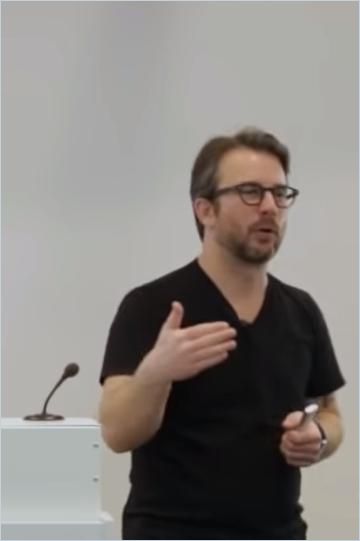
While people ‘only’ become inflexible, grumpy and stuffy as a result of being averse to change, companies go down the drain in the competitive battle.
Here are a few examples of what this looks like – and why even successful players should be aware of disruptive competitors in their blind spots:
Whether organization or individual, single “starters” make the difference. And if these innovators follow a savvy model, chances are good that both that individual and his or her team or company will benefit. With How to Begin, author and entrepreneur Michael Bungay Stanier offers a practical and compelling guide to jump-start your journey.
His sensible advice and easy-to-follow exercises lead you as you work toward your goal, but also help you pinpoint what might be holding you back from crossing the finish line.
- Set a “worthy goal” that is thrilling, important and even daunting – and therefore deserving of your time and energy.
- Recognize the human tendency to favor the status quo. Like a cost-benefit analysis, weigh the pros and cons of keeping it.
- Consider the personal qualities you will enhance, but also the risks you take, when pursuing your worthy goal.
- Take small steps forward by testing frequently to ensure your plan is solid.
- Learn more…
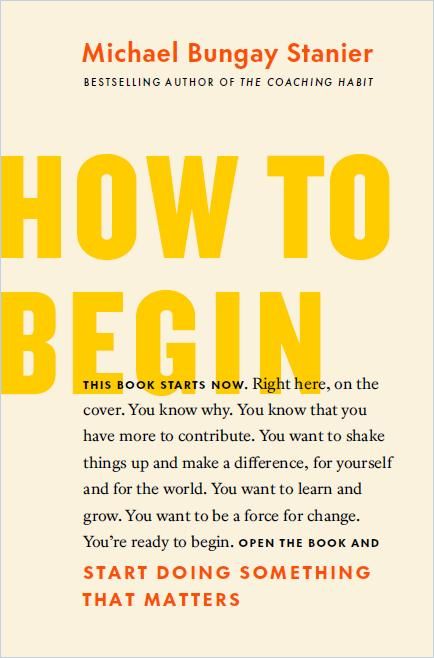
Don’t forget to surround yourself with a collection of supporters who will help you make a difference in achieving your worthy goal:
- The Warrior who stands by you at all times.
- The Healer who coaches you to strive for your best self in tough times.
- The Teacher who offers guidance, insight and logic.
- The Visionary who pushes your personal boundaries.
- The Challenger who pushes you off the comfortable path if everything looks all too promising.
If individual people in your circle cover two or three of these ideals at once, you don’t have to worry – it’s a good sign that you surround yourself with smart and socially savvy people to pursue your goals. But always remember: Setting goals is easy, yet achieving goals is arduous. In order to test your idea and your environment equally, as the “controller” of your beginning, rely on the two-week rule that Jeff Haden recommends.
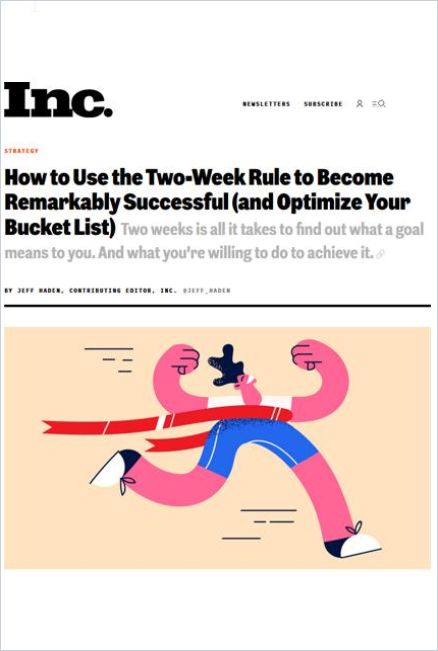
How to Use the Two-Week Rule to Become Remarkably Successful (and Optimize Your Bucket List)
Inc.His idea: Commit to your goal for just a fortnight. After two weeks of dedicated work, you’ll start to see the fruits of your labor emerge, and you can then decide whether your goal is worth pursuing. Proceed this way:
- A slow start toward a big goal can sabotage your success.
- To increase your chances of achieving your desired goal, work tirelessly toward it for an initial two-week period.
- A two-week commitment to your goal informs you of what you need to do to reach it.
- Learn more…
Did you know? In order to venture into the unknown and initiate change, it is advantageous to be curious, open, and to some extent agile. All of this can be learned. Here you can discover how:
5. Keep Starting New Things
Once people have started to try new things, to learn new things, to discover more and more, they don’t want to stop, because they notice that they become more satisfied – and also more successful. It’s not even exhausting, because it’s the most fun if you don’t just choose the really big projects, but keep your eyes open and pick up something new here and there.
Do something “crazy” every day: Tell a colleague what you appreciate about his or her work and ask how he or she does it. Go to a museum over lunch and see an exhibit on something you have no clue about. Buy a printed newspaper again and read it 80% of the way through. Or enter any topic in the top right search and read the getAbstract summary or Journal article suggested by our algorithm (which might open your horizons to something you didn’t necessarily have in mind!)
Anyone who jumps into cold water is at least refreshed. But that doesn’t mean you always have to jump into the same puddle.
What does it take to bring projects to a conclusion that satisfies you, so that you have the capacity to discover something new again? Perseverance and grit, some experience of when it’s time to pass the buck, and a creative mind-set to seek out new challenges. Here you’ll learn how to develop all of that. And in the process inspire others to do the same:






